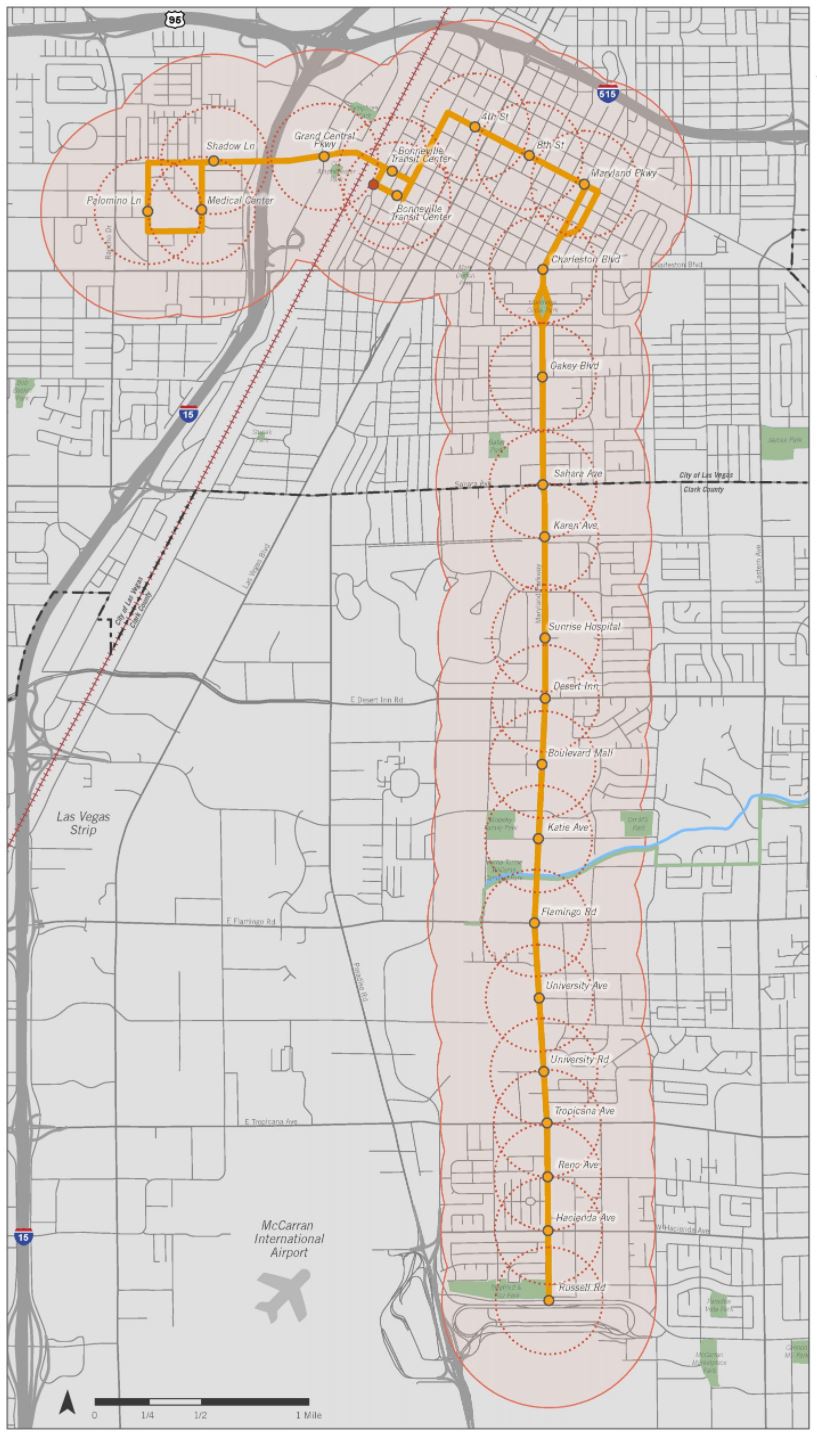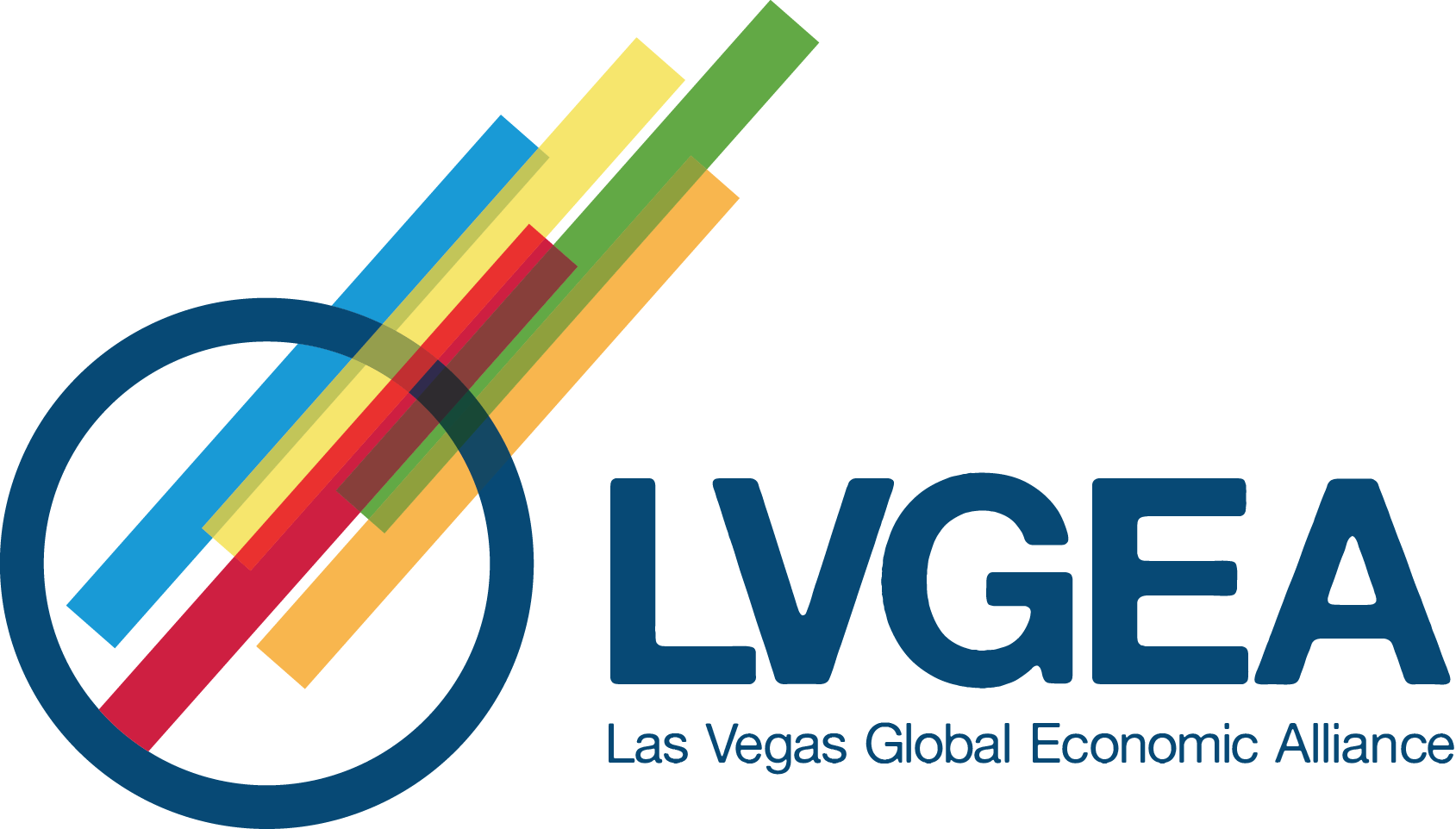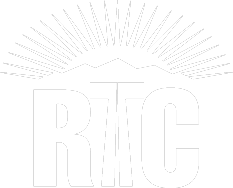TOD study for Maryland Parkway aims to maximize development potential while prioritizing equity along future BRT line
PLANNING FOR TOD ON MARYLAND PARKWAY
The Maryland Parkway Corridor Transit-Oriented Development Plan, which is nearing completion after more than two years of study and development, seeks to usher in a new era of development and revitalization in the Maryland Parkway corridor and throughout the Las Vegas Valley.
The study, slated for completion this fall, looks to spur equitable transit-oriented development (TOD) in the corridor, providing a template for how it can be accomplished along other high-capacity transit corridors in the region as well.
The city of Las Vegas and Clark County, both of whom manage capital improvements and development along portions of the Maryland Parkway corridor, partnered with the Regional Transportation Commission of Southern Nevada (RTC) to evaluate the development potential around select areas along the forthcoming bus rapid transit (BRT) route.
The result is two TOD plans, one for each jurisdiction, that will guide development that complements the BRT line once constructed.
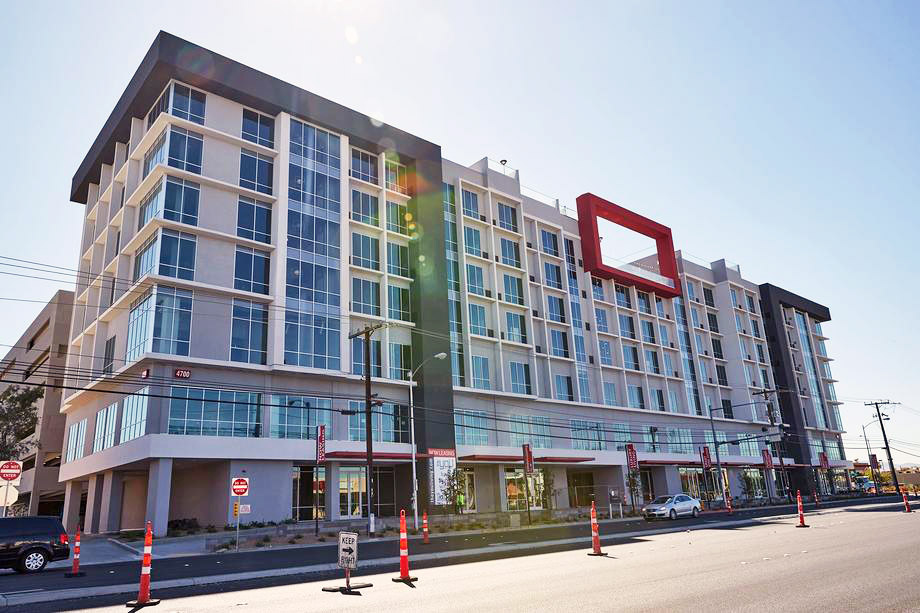
The University Gateway development, which opened on Maryland Parkway in 2019 across from the UNLV campus, is an example of TOD in the region. The mixed-use development includes retail, residential, and office units. (Photo credit: UNLV)
The TOD plans are based on analyses of existing conditions, market readiness, workforce housing needs, and the value capture potential of BRT in the corridor. Combined, the analyses provide each jurisdiction with recommendations for appropriate land use mixes, development potential, community amenities, and street network improvements. They will also provide implementation priorities and projects for jumpstarting TOD in the corridor.
The plans also emphasize the need for more equitable development in the region and recommend strategies to ensure that future TOD is accessible and beneficial to all populations in Southern Nevada. Each plan is supplemented by a workforce housing plan, providing information and tools for ensuring that access to adequate housing is available for all income levels afforded by the region’s residents.
TOD FOCUS AREAS
Seven priority focus areas were chosen for the study, identified by community stakeholders early on in the planning process, for their ability to position important districts and activity centers in downtown Las Vegas and Clark County.
Market analyses of each focus area highlight opportunities for incentivizing new development and placemaking, while preventing displacement of existing residents, businesses, and community institutions in the area.
The focus areas are:
City of Las Vegas
Clark County
LOOKING TOWARD THE FUTURE
Each jurisdiction is already beginning to implement the recommendations of these plans.
The city of Las Vegas recently approved its 2050 Master Plan, which saw the amendment of parcels located near existing and future transit corridors citywide to TOD-specific land uses. A future TOD zoning code is under development and will be piloted along the city portion of Maryland Parkway to see how it works before adopting it throughout the city.
The forthcoming code is intended to provide developers with flexibility in meeting a specific number of TOD-related requirements, such as providing mixed-uses and active street frontages, while also allowing for alternative paths to compliance if community benefits, such as affordable housing and open space, are present.
Las Vegas is also gearing up to implement some of the priority projects and recommendations from the plan, focusing on early, quick wins that can demonstrate the long-term potential of TOD development in the corridor.
Similarly, Transform Clark County, an effort to establish a cohesive countywide vision and rewrite of the county’s master plan and development code, is currently underway.
The TOD Plan provides a land-use vision for the county’s portion of Maryland Parkway, and concepts from this plan will inform the new master plan and development code.
The county’s new master plan is expected to be approved this fall, and the development code is to be written to align with the vision set forth in the master plan.
BRT ON MARYLAND PARKWAY
The RTC Board of Commissioners voted to move forward with BRT along Maryland Parkway in April 2019, and planning for its construction is currently underway.
The corridor’s final design isn’t expected until late 2022. Improvements are expected to include dedicated transit lanes, enhanced transit stations, upgraded pedestrian crossings, and improved pedestrian and bike infrastructure.
Funding for these improvements is still being secured.
Ultimately, the Maryland Parkway TOD Plans can provide blueprints for how TOD can be accomplished along other transit corridors in the region. RTC recently developed OnBoard, a comprehensive mobility plan for the region that identifies potential corridors for high-capacity transit (HCT) implementation in the future.
The plans will also help RTC maximize its ridership potential of the new BRT line.
Implementation of this vision also progresses the goals of the Southern Nevada Strong Regional Plan, which seeks to create complete communities through compact sustainable development, locating jobs, housing, transportation, and community amenities within close proximity to one another.
For more information on the Maryland Parkway BRT project and the TOD Plans, visit https://www.rtcsnv.com/maryland-parkway/.
Expanded service area, microtransit pilot, ‘transit lab,’ all part of recent RTC service changes
RECONNECTING SOUTHERN NEVADANS
Thanks to federal stimulus funding, transit service throughout the valley is growing and expanding to help Southern Nevadans better reconnect to destinations, resources, and opportunities.
Changes to the RTC of Southern Nevada’s transit service, which took effect on Aug. 8, include new routes and extensions to several existing routes, expansion of the paratransit service area, and a few new transit innovations.
The changes aim to enhance transit access and efficiency across the region while promoting innovation and increasing transit equity in underserved areas, according to the RTC.
All told, more than 185,000 Southern Nevadans gained access to the transit system with the new service.
The changes were informed by the RTC’s OnBoard Mobility Plan, as well as by input provided by residents during the agency’s extensive public engagement efforts.
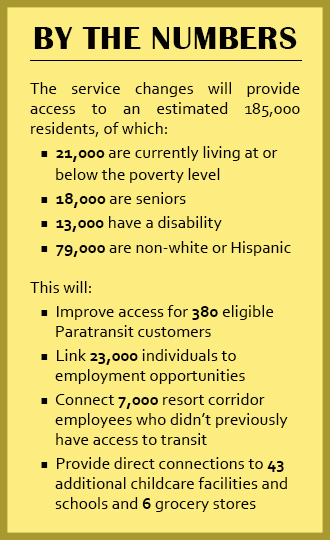
NEW ROUTES & INCREASED FREQUENCY
In an effort to decrease wait times and make public transit more efficient, the RTC increased frequency on the following routes:
- Route 119 (Simmons/Koval)
- Route 203 (Spring Mountain/Desert Inn/Lamb)
- Route 207 (Alta/Stewart)
- Route 209 (Vegas/Owens)
- Route 210 (Lake Mead)
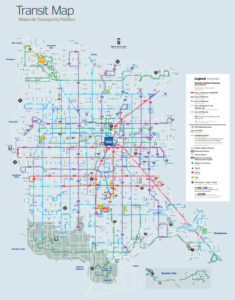 And two new transit routes in the valley were added – Route 220 (Ann/Tropical) and Route 221 (Cactus/Horizon Ridge/Boulder City) – to allow greater access to and from newly developed areas in the valley.
And two new transit routes in the valley were added – Route 220 (Ann/Tropical) and Route 221 (Cactus/Horizon Ridge/Boulder City) – to allow greater access to and from newly developed areas in the valley.
The expansion of services also included the restoration of weekend service in underserved areas, including Routes 207 (Alta/Stewart) and 209 (Vegas/Owens), and by enhancing weekend frequency on Route 210 (Lake Mead Blvd.).
Transit service also resumed its regular weekday schedule, following schedule reductions due to COVID-19.
For additional details on the service changes, see FOX 5’s coverage of the transit expansion.
Click here for an interactive map of the transit system and for the RTC’s complete updated rider guide, which is presented in both English and Spanish.
INNOVATION
The RTC is also piloting a new microtransit service in the south valley and implementing a “transit lab” initiative to provide faster and more frequent service to some of the busiest stops along Charleston Blvd.
The microtransit service, RTC On-Demand, will be piloted in the southwest and West Henderson areas. The service is meant to supplement fixed-route service for short trips and fill transit gaps that exist in the growing areas, which have lacked coverage in the past.
Customers will be able to travel to destinations within the roughly 31-square-mile microtransit zone, or to a transit stop to transfer to a fixed-route bus to reach their final destination outside of the microtransit zone.
The new service will provide access to the new Raiders training facility, M Resort, several grocery stores and parks, and many new restaurants in the area.
Rides, which start at $2, can be scheduled via the RTC-OnDemand app, booking online at book.rtcondemand.rideco.com, or by calling (702) 676-1801.
The “transit lab” is a new innovation that aims to improve the speed of service along Charleston Blvd., one of the region’s higher-ridership corridors. By redesigning Route 206 on weekdays and providing two lines of service – “206 Gold” and “206 Blue” – during peak ridership hours, the RTC expects the route to be 25 percent faster.
See the bulleted content on the second page of this PDF for additional details on the “transit lab” enhancements to Route 206.
PARATRANSIT IMPACT
With new lines being added to the RTC’s fixed-route service, the Paratransit service area also expanded, bringing an estimated 380 Paratransit-eligible residents into the area. Much of the new coverage was in the southwest and northwest areas of the region.
Paratransit service is a shared-ride, door-to-door program available for individuals with disabilities who are unable to independently use the RTC’s fixed-route system.
CELEBRATING THE EXPANSION
To announce and celebrate the service change updates, a press conference was held at the Las Vegas Ballpark on Aug. 7. Headlining the event were U.S. Congresswomen Dina Titus and Susie Lee, whose work to secure federal funding facilitated the RTC’s largest geographic expansion of service since 1993.
Governor Steve Sisolak, RTC Chair and Henderson Mayor Debra March, RTC Vice-Chair, and Clark County Commissioner Justin Jones were also on hand, as were Clark County Commissioner Mike Naft and City of Las Vegas Mayor Carolyn Goodman.
Also participating in the event were representatives from the Las Vegas Raiders, Las Vegas Aviators, and Vegas Golden Knights, who shared their appreciation for transit that gets both fans and workers to sports stadiums and venues throughout the community.
“As the public transportation provider for Southern Nevada, the RTC has always recognized the essential nature of the services it provides,” said March. “With more than 56 million trips provided last year, despite the pandemic, it became even clearer how critical transportation was for our community and our economy.”
RECONNECTING SOUTHERN NEVADANS
Thanks to federal stimulus funding, transit service throughout the valley is growing and expanding to help Southern Nevadans better reconnect to destinations, resources, and opportunities.
Changes to the RTC of Southern Nevada’s transit service, which took effect on Aug. 8, include new routes and extensions to several existing routes, expansion of the paratransit service area, and a few new transit innovations.
The changes aim to enhance transit access and efficiency across the region while promoting innovation and increasing transit equity in underserved areas, according to the RTC.
All told, more than 185,000 Southern Nevadans gained access to the transit system with the new service.
The changes were informed by the RTC’s OnBoard Mobility Plan, as well as by input provided by residents during the agency’s extensive public engagement efforts.
NEW ROUTES & INCREASED FREQUENCY
In an effort to decrease wait times and make public transit more efficient, the RTC increased frequency on the following routes:
- Route 119 (Simmons/Koval)
- Route 203 (Spring Mountain/Desert Inn/Lamb)
- Route 207 (Alta/Stewart)
- Route 209 (Vegas/Owens)
- Route 210 (Lake Mead)
And two new transit routes in the valley were added – Route 220 (Ann/Tropical) and Route 221 (Cactus/Horizon Ridge/Boulder City) – to allow greater access to and from newly developed areas in the valley.
The expansion of services also included the restoration of weekend service in underserved areas, including Routes 207 (Alta/Stewart) and 209 (Vegas/Owens), and by enhancing weekend frequency on Route 210 (Lake Mead Blvd.).
Transit service also resumed its regular weekday schedule, following schedule reductions due to COVID-19.
For additional details on the service changes, see FOX 5’s coverage of the transit expansion.
Click here for an interactive map of the transit system and for the RTC’s complete updated rider guide, which is presented in both English and Spanish.
INNOVATION
The RTC is also piloting a new microtransit service in the south valley and implementing a “transit lab” initiative to provide faster and more frequent service to some of the busiest stops along Charleston Blvd.
The microtransit service, RTC On-Demand, will be piloted in the southwest and West Henderson areas. The service is meant to supplement fixed-route service for short trips and fill transit gaps that exist in the growing areas, which have lacked coverage in the past.
Customers will be able to travel to destinations within the roughly 31-square-mile microtransit zone, or to a transit stop to transfer to a fixed-route bus to reach their final destination outside of the microtransit zone.
The new service will provide access to the new Raiders training facility, M Resort, several grocery stores and parks, and many new restaurants in the area.
Rides, which start at $2, can be scheduled via the RTC-OnDemand app, booking online at book.rtcondemand.rideco.com, or by calling (702) 676-1801.
The “transit lab” is a new innovation that aims to improve the speed of service along Charleston Blvd., one of the region’s higher-ridership corridors. By redesigning Route 206 on weekdays and providing two lines of service – “206 Gold” and “206 Blue” – during peak ridership hours, the RTC expects the route to be 25 percent faster.
See the bulleted content on the second page of this PDF for additional details on the “transit lab” enhancements to Route 206.
PARATRANSIT IMPACT
With new lines being added to the RTC’s fixed-route service, the Paratransit service area also expanded, bringing an estimated 380 Paratransit-eligible residents into the area. Much of the new coverage was in the southwest and northwest areas of the region.
Paratransit service is a shared-ride, door-to-door program available for individuals with disabilities who are unable to independently use the RTC’s fixed-route system.
CELEBRATING THE EXPANSION
To announce and celebrate the service change updates, a press conference was held at the Las Vegas Ballpark on Aug. 7. Headlining the event were U.S. Congresswomen Dina Titus and Susie Lee, whose work to secure federal funding facilitated the RTC’s largest geographic expansion of service since 1993.
Governor Steve Sisolak, RTC Chair and Henderson Mayor Debra March, RTC Vice-Chair, and Clark County Commissioner Justin Jones were also on hand, as were Clark County Commissioner Mike Naft and City of Las Vegas Mayor Carolyn Goodman.
Also participating in the event were representatives from the Las Vegas Raiders, Las Vegas Aviators, and Vegas Golden Knights, who shared their appreciation for transit that gets both fans and workers to sports stadiums and venues throughout the community.
“As the public transportation provider for Southern Nevada, the RTC has always recognized the essential nature of the services it provides,” said March. “With more than 56 million trips provided last year, despite the pandemic, it became even clearer how critical transportation was for our community and our economy.”

